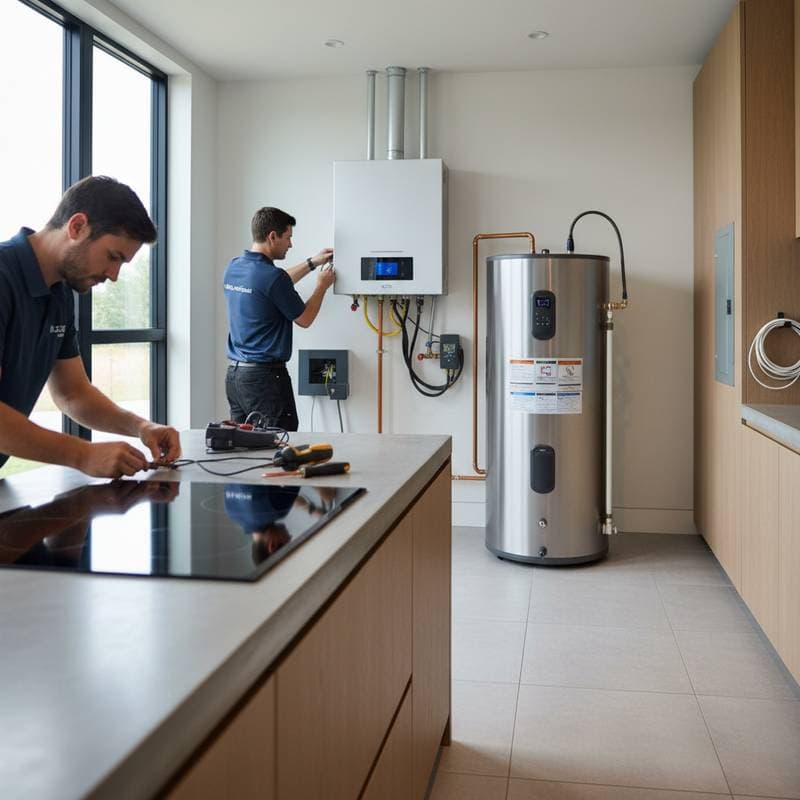Introduction to Attic Insulation Benefits
Attic insulation serves as a critical barrier against heat loss in homes. During winter months, warm air rises and escapes through poorly insulated attics, forcing heating systems to work harder. In summer, hot attic air infiltrates living spaces, increasing reliance on air conditioning. Upgrading insulation addresses these issues directly, leading to lower utility costs and greater indoor comfort throughout the year.
Homeowners often overlook the attic when planning energy improvements. Yet, this space represents one of the most effective areas for efficiency gains. Studies indicate that adequate insulation can reduce heating and cooling expenses by up to 20 percent. Beyond savings, such upgrades qualify for federal incentives, making the investment more accessible.
This guide examines the advantages of attic insulation, suitable materials, installation processes, and available tax credits for 2025. Readers gain practical insights to evaluate and implement changes that enhance home performance.
Understanding Energy Loss in Attics
Heat naturally moves from warmer to cooler areas, a principle known as conduction. In attics without sufficient insulation, this process accelerates energy waste. Roof structures absorb solar heat during the day, which then radiates downward into the home. Without barriers, this cycle burdens HVAC systems unnecessarily.
Moisture also plays a role in attic inefficiency. Condensation forms when warm indoor air meets cold attic surfaces, potentially leading to mold growth and structural damage. Effective insulation mitigates these risks by stabilizing temperatures and controlling humidity levels.
Assessing current insulation levels provides a starting point. Measure the depth of existing material; most homes require at least R-38 value in northern climates and R-30 in southern regions. Visual inspections reveal gaps, compression, or settling that diminish effectiveness over time.
Selecting Optimal Insulation Materials
Various materials suit attic insulation needs, each with distinct properties and costs. Fiberglass batts offer affordability and ease of installation, available in pre-cut sizes that fit between rafters. Blown-in cellulose provides excellent coverage for irregular spaces, using recycled paper treated for fire resistance.
Spray foam insulation delivers superior air sealing and high R-values per inch, ideal for sealing cracks and creating a continuous barrier. However, professional application ensures even distribution and safety. Rigid foam boards work well for cathedral ceilings or flat roofs, providing durable thermal resistance.
Consider environmental impact when choosing options. Materials like cellulose and fiberglass incorporate recycled content, aligning with sustainable home practices. Local climate influences selection; denser materials perform better in humid areas to prevent settling.
- Evaluate R-value requirements based on your region's building codes.
- Check for moisture-resistant features in damp climates.
- Balance initial costs with long-term energy savings projections.
Consult product specifications to match materials with attic layout and ventilation needs.
Professional Installation Versus DIY Approaches
Professional installation guarantees precision and compliance with safety standards. Experts assess structural elements, ensure proper ventilation, and integrate air sealing techniques. This approach minimizes errors that could void warranties or reduce performance.
DIY methods appeal to handy homeowners with accessible attics. Begin by gathering tools such as protective gear, insulation rolls or blowers, and measuring tapes. Clear debris and seal vents before proceeding to avoid airflow disruptions.
For blown-in applications, rent equipment from home centers and follow manufacturer guidelines for depth and density. Batts require careful cutting to fit snugly without compression, which lowers insulating power. Always wear masks and suits to protect against fibers and dust.
Regardless of method, prioritize safety. Attics present hazards like electrical wiring and sharp nails. If unsure, hire certified installers through organizations like the Insulation Institute.
Integrating Air Sealing for Maximum Efficiency
Insulation alone does not suffice; air sealing prevents drafts that bypass materials. Common leak points include recessed lights, plumbing vents, and attic hatches. Use caulk or foam sealant to close these gaps, reducing unwanted air exchange by up to 15 percent.
Conduct a blower door test to identify leaks systematically. This professional service pressurizes the home to reveal infiltration sites. Homeowners can perform preliminary checks with incense sticks to detect airflow around edges.
Combine sealing with insulation for synergistic effects. Sealed attics maintain consistent temperatures, extending the lifespan of roofing materials. This step enhances overall home airtightness, complementing other efficiency measures like window upgrades.
Navigating 2025 Federal Tax Credits
The Inflation Reduction Act extends energy-efficient home improvement credits through 2032. Attic insulation qualifies under the Energy Efficient Home Improvement Credit, offering 30 percent of costs up to $1,200 annually. Qualifying materials must meet specific efficiency standards outlined by the IRS.
Eligibility requires installations in existing homes, not new constructions. Keep receipts and manufacturer certifications for tax filing. Consult IRS Form 5695 for detailed calculations and limitations.
Additional rebates may apply through utility programs or state initiatives. These incentives lower upfront expenses, accelerating payback periods to two to five years depending on usage patterns.
Long-Term Advantages and Home Value Impact
Beyond immediate savings, attic insulation improves home resilience. Stable temperatures reduce wear on appliances, potentially lowering repair costs. Enhanced comfort encourages even heating and cooling distribution, eliminating hot or cold spots.
Resale value increases with documented energy upgrades. Buyers prioritize efficient homes, often paying premiums for lower utility projections. Energy audits provide verifiable data to highlight improvements during sales.
Sustainability benefits extend to reduced carbon footprints. Efficient homes consume less fossil fuels for heating and cooling, contributing to broader environmental goals. Homeowners enjoy peace of mind knowing their upgrades support long-term ecological health.
Take Action on Your Attic Upgrade
Evaluate your attic today to identify improvement opportunities. Gather quotes from reputable contractors and review incentive programs. Implement changes that align with your budget and goals for lasting efficiency gains.
These steps position your home for reduced costs, superior comfort, and financial rewards. Professional guidance ensures optimal results, turning attic maintenance into a strategic investment.









